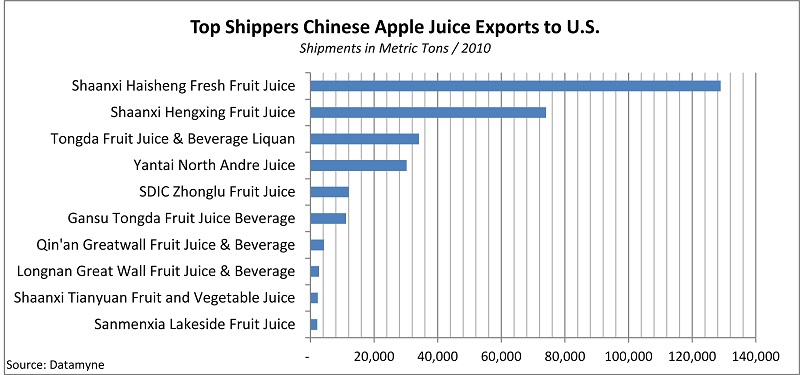The Chinese don’t drink much apple juice, they make it for US
The latest issue of Amber Waves, the quarterly from the US Department of Agriculture Economic Research Service, spotlights China’s role as the world’s largest supplier of apple juice concentrate and the source for about two-thirds of the US apple juice supply.
China’s juice industry barely existed until the early 1990s, when Chinese farmers, encouraged by their government’s market reforms, began to diversify by planting apples and other horticultural crops. Domestic demand for apples was quickly sated and depressed prices followed. A combination of public-private, Chinese-foreign investment launched the juice processing industry to absorb the glut of apples. Apple juice is not traditionally part of the Chinese diet, so export markets were the target from the start. Today the Chinese industry relies on exports for over 90% of its sales.
All this was before the US determined to revoke its anti-dumping tariffs on Chinese apple juice concentrate November 8, 2010. Now that the tariff is lifted, China’s apple juice companies are expected to become much more active in the US market. At the same time, Amber Waves says the Chinese juice processors will be competing for pricier fruit as Chinese consumer taste for apples develops.
We turned to the Datamyne bill-of-lading database to identify the top players in the trade, including top shippers, consignees, and carriers. You can see the top 10 companies shipping apple juice from China to the US below. We also looked up leading shippers in Brazil, Argentina, and Chile, countries that rank next (albeit distantly) after China as sources for US apple juice imports. If you’d like to see how much you can learn about who’s selling and buying Chinese apple juice (or any other import) in the US, we’d be happy to show you, just ask us for a (free) demo.




